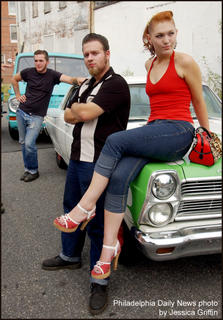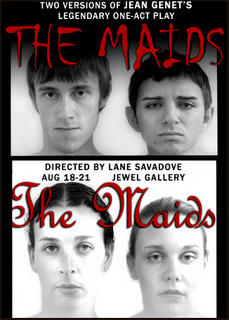Paddling in the dark: blind dragon-boaters race on the Schuylkill River
 This story ran in the Daily News on September 28, 2005.
This story ran in the Daily News on September 28, 2005.JUST GETTING INTO a boat is difficult at Lloyd Hall on Boathouse Row.
First, you have to traverse the tall, over-sized concrete steps.
Then you have to drop about three feet from the bank of the river onto a floating dock.
The dock is actually a collection of small rafts tied together so there are gaps, not to mention peeling boards, popping nails and missing planks.
Once you get to your precariously bobbing boat, you must be careful not to rock too much or you’ll wind up in the dark river.
Now, imagine doing that without being able to see.
Getting in the boat was the first challenge for the squad of paddlers known as Homer’s Heroes, a dragon boat team made up of blind athletes from around the Philadelphia region.
The first year team is among the 128 crews that will be competing on Saturday in this year’s Dragon Boat Festival, the fourth annual one day extravaganza of teamwork, fitness and goodwill on the Schuylkill River.
“There is a great deal of potential in this boat!” said Carol Lee Lindner, the founder and organizer of the event who also coaches many of the teams.
Among the 2,800 paddlers who will run the 500 meter race are church groups, co-workers, college students, cancer survivors, a squad of mentally challenged people and a crew of deaf paddlers.
At last year’s festival, a squad of homeless men manned a boat.
•••
During a recent practice, sighted volunteers helped the blind paddlers - clad in red life jackets and waving walking sticks - to navigate their way down the steps, onto the dock and into the long, red boat.
“This is not easy walking here,” said paddler Maria Grayson, 40, of Mt. Airy.
White canes were then put away and replaced by wood paddles.
The usually dark world of the paddlers was made even more uncertain by motion of the water and the shaking ship as other people climbed aboard.
Eventually, the 20 man crew was ready, squeezed into the boat with their oars poised in the water.
Lindner sat in the drummer’s seat and barked commands.
“Remember, your outside hips go forward!” she bellowed in her sweet-natured voice. “The outside leg goes up against the gunnel!”
The boat began floating away from the dock.
•••
Lindner started the festival in 2002 to bring the team-oriented sport to the masses.
Dragon boat racing can be traced back nearly 2,500 years, to when Chinese politician Qu Yuan committed suicide by drowning in the Milou River as a protest against corruption.
Legend has it that the local fishermen beat their drums and splashed water with their paddles to stop fish and evil spirits from eating Yuan’s body.
Riding boats and banging drums became an annual ritual, and then it evolved into a competitive sport, always honoring the spirit of Yuan.
The first three events in Philadelphia have raised hundreds of thousands of dollars for local charitable organizations including the Fox Chase Cancer Center.
•••
“Your little finger should go all the way into the water,” Lindner ordered. “That way you make sure your blade is totally in.”
As Lindner counted off, the team stroked the water, slightly out of sync but the boat slowly moved forward.
“It feels off balance,” said team captain Michelee Kemp.
“Come on Michelee, you can do it!” prodded Lindner.
Kemp, 32, has been blind since birth. The mother of a two-year-old daughter, Lauren, travels nearly three hours from her home in Ocean City, Maryland just to be a part of the experience.
“It’s exciting, almost like an adventure,” she said. “I am a competitive person but personally, I most enjoy the challenge of getting everyone here, getting this together.”
The boat built up speed, the rowers - despite not being able to see each other - began rowing in unison, and the team glided past the old Victorians along Boathouse Row.
“A good majority of the team has very good technique,” Lindner said later that day. “Better than many paddlers on the other teams.”
The paddlers listened to the instructions, ceasing to paddle when Lindner barked, “Hold water!”
•••
“It’s a great feeling of freedom,” said Grayson. “Just to be able to be out there.”
Grayson, a former softball and basketball player, lost her sight at age 27 due to diabetes related complications. She is also the recipient of a kidney transplant.
And just three weeks ago, she won two gold medals at an international rowing competition on the Schuylkill River sponsored by the Philadelphia Rowing Program for the Disabled.
“Being able to participate in athletic endeavors again, that was the biggest draw,” said the modest Grayson.
Grayson also cyles on tandem bikes, she skis and rock climbs, both indoor and outdoor.
•••
Since it took so long to board the boat, and another team was waiting to use the communal craft, the practice session had to be cut short.
The blind crew turned the craft around and smoothly glided back to the dock, with a sighted steerer controlling the direction.
“Having the trust in them, and in each other,” said Kemp. “It’s an amazing thing.”
Teammate John Curran, 49, described cruising in the dragon boat as similar to riding an exercise bike.
“Because you can’t see, you feel like you’re not going anywhere” he said. “You don’t know if you win or lose. You almost have to rely on others to fill you in.”
Curran has been progressively losing his sight for the past 12 years. He said his vision now is like looking through frosted glass, and he expects that one day, he will eventually fade to black.
"Being blind is almost like being a professional baseball player at the end of his career,” Curran said. “You just have to find something else to do.”
A former carpet layer and furniture mover, he is still learning to adapt to life without vision.
“Imagine a blind mover showing up at your house!” Curran said with a laugh.
The Northeast Philadelphia resident still wears glasses but he noted that they are just for protection.
“You have to stay positive,” he said. “That’s the key thing.”
•••
Lindner watched with a big smile as the Homer’s Heroes squad began to disembark from the boat.
"I am so impressed with this group,” she said. “I’m in such awe.”
Members of another dragon boat team, the Big Red Dragons, helped the Heroes climb the steep wall up to shore, and then over the concrete steps.
“That’s the spirit,” Lindner said with a smile.


